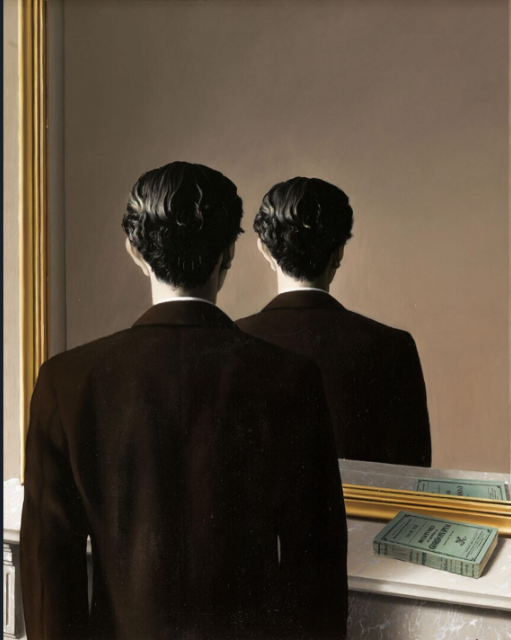Ah quell'occhio maledetto!
The third and last time the protagonist stands in front of a mirror is in (XII) “The eye and Papiano”. Papiano, one of his hosts, has invited The Spaniard, a person who Adriano Meis met in Monte Carlo when he was still going through life as Mattia Pascal. He is frightened to be recognized by this person and consults the mirror. The personified mirror shows that the protagonist sees himself as Adriano Meis, but also that he is still Mattia Pascal. Adriano Meis is so scared to be recognized because of his crossed-eyed eye, that he decides to have surgery on this eye to get rid of Mattia Pascal. In this scene, the reflection of the mirror tells him that his identity change did not entirely succeed. We see that his old identity, the dead Mattia Pascal, is still alive, talking to Adriano Meis and confronting him with the problem he got himself into.
What a mess you are in, Adriano Meis! Be honest, now! Tell the truth! You are afraid of Terenzio Papiano, and you would like to put the blame on me–on me again–just because when I was in Nice one day I had a little squabble with a Spaniard. Well, I was right, wasn’t I, as you very well know. And do you think you can get out of it by obliterating the last trace of me from your face? Do so, my dear Mr. Meis! Follow the advice of Miss Silvia Caporale! Call in Doctor Ambrosini and have your eye put in place again. … Then, well, then you’ll see!
The fragment demonstrates that the two identities are separated, as the reflection of the old one talks to the new one. The mirror is the instrument that reflects a man torn between his two identities: one that is real and one that is invented. Even if other people see him in a certain way, the protagonist is aware of the different masks he wears, and in the end he becomes identity-less. The mirror addresses the notion of the way you see yourself. Each time Mattia Pascal looks at himself, he is constantly focused on his eye, while other people may not pay so much attention to this. The novel questions the truth and the many perceptions of reality, a theme that Pirandello further explores in Uno, Nessuno e Centomila.
